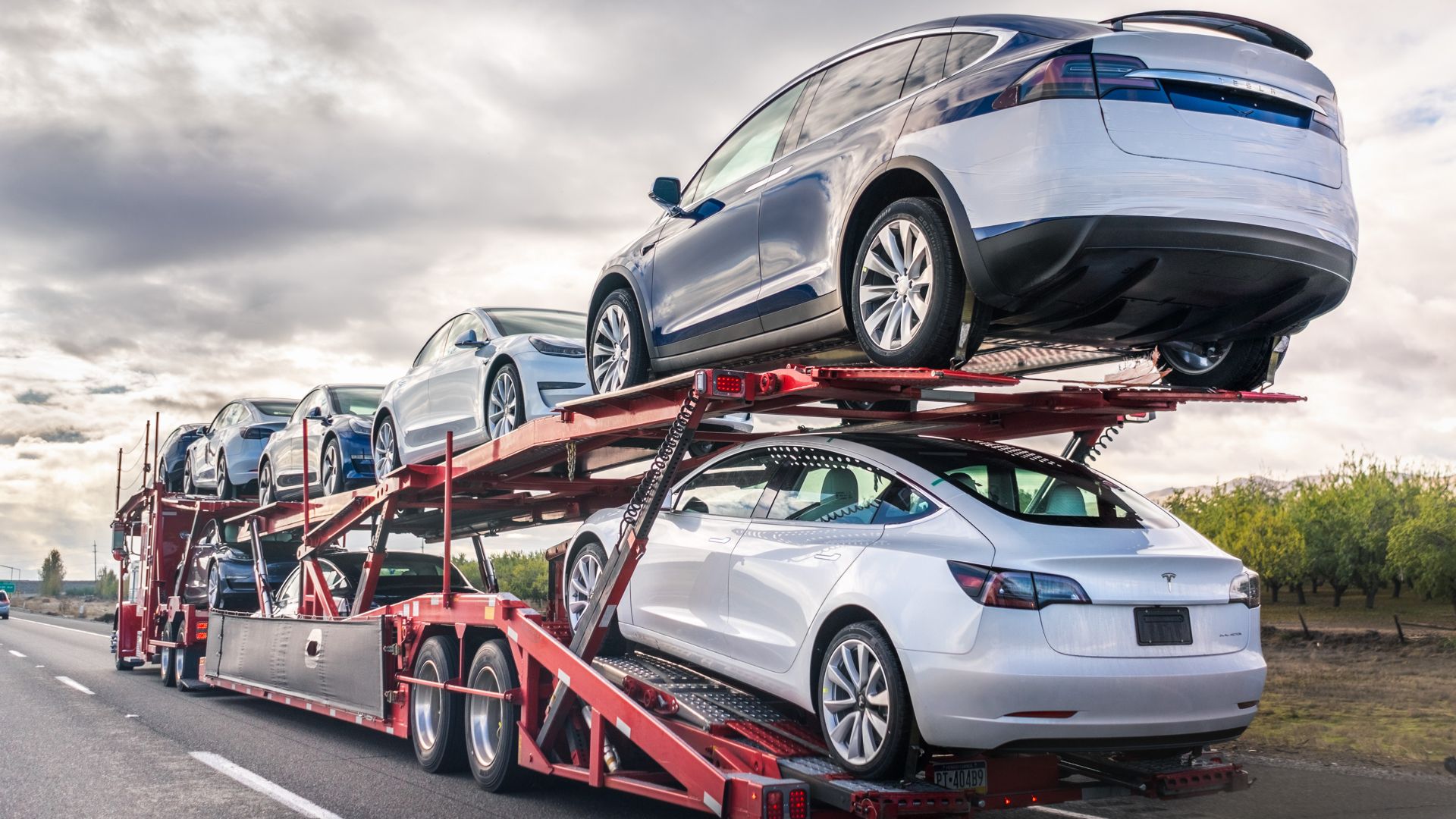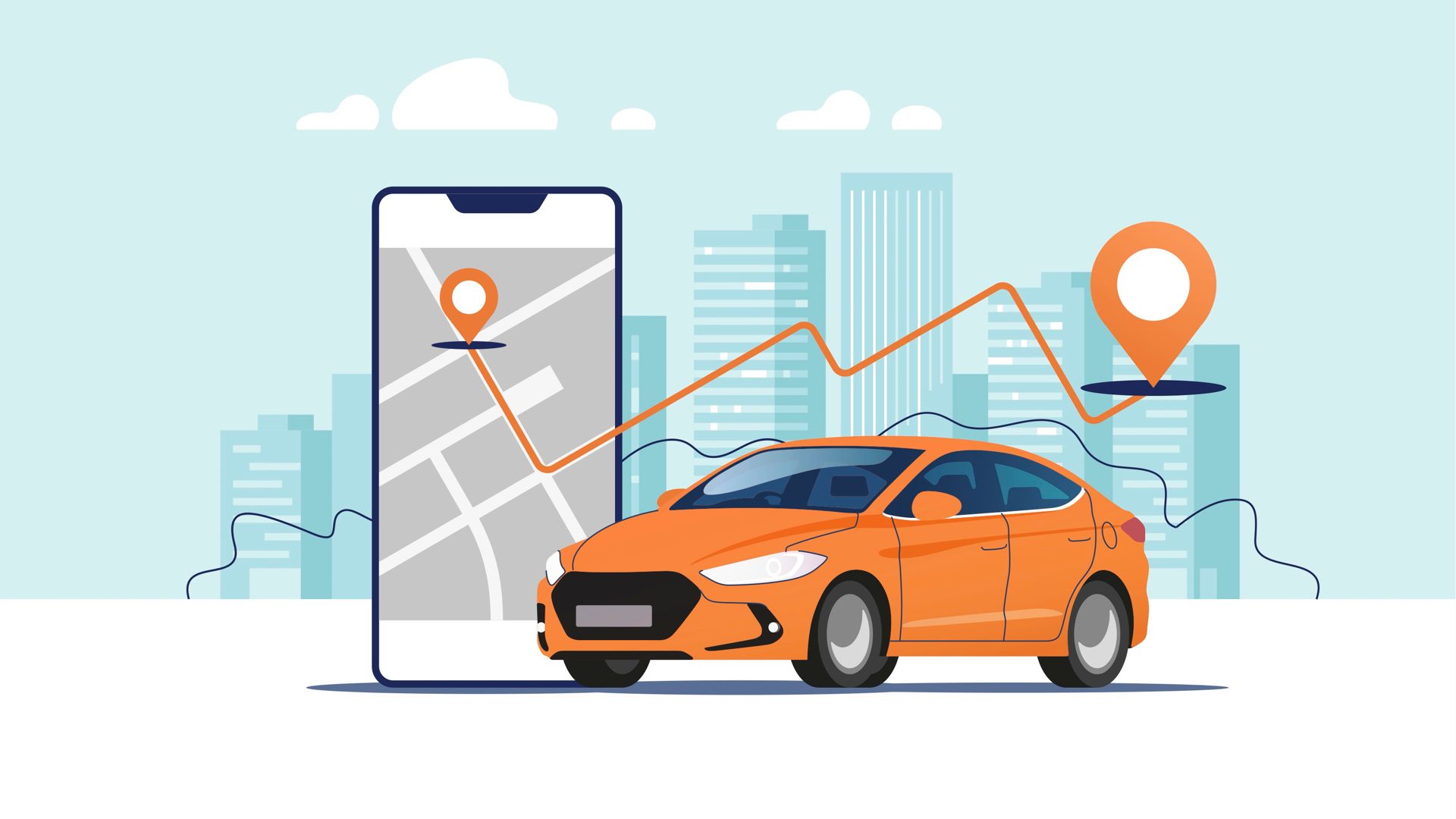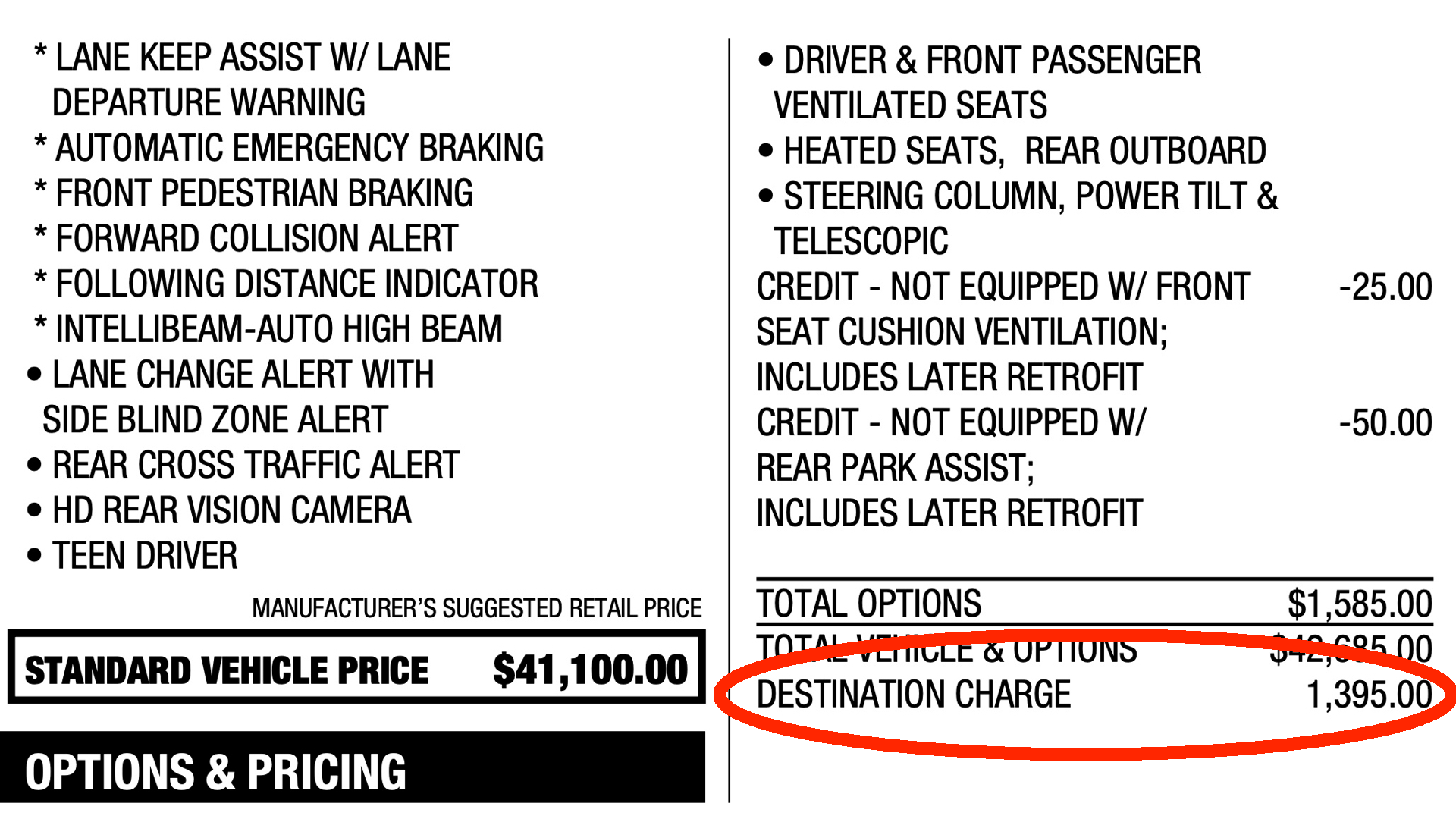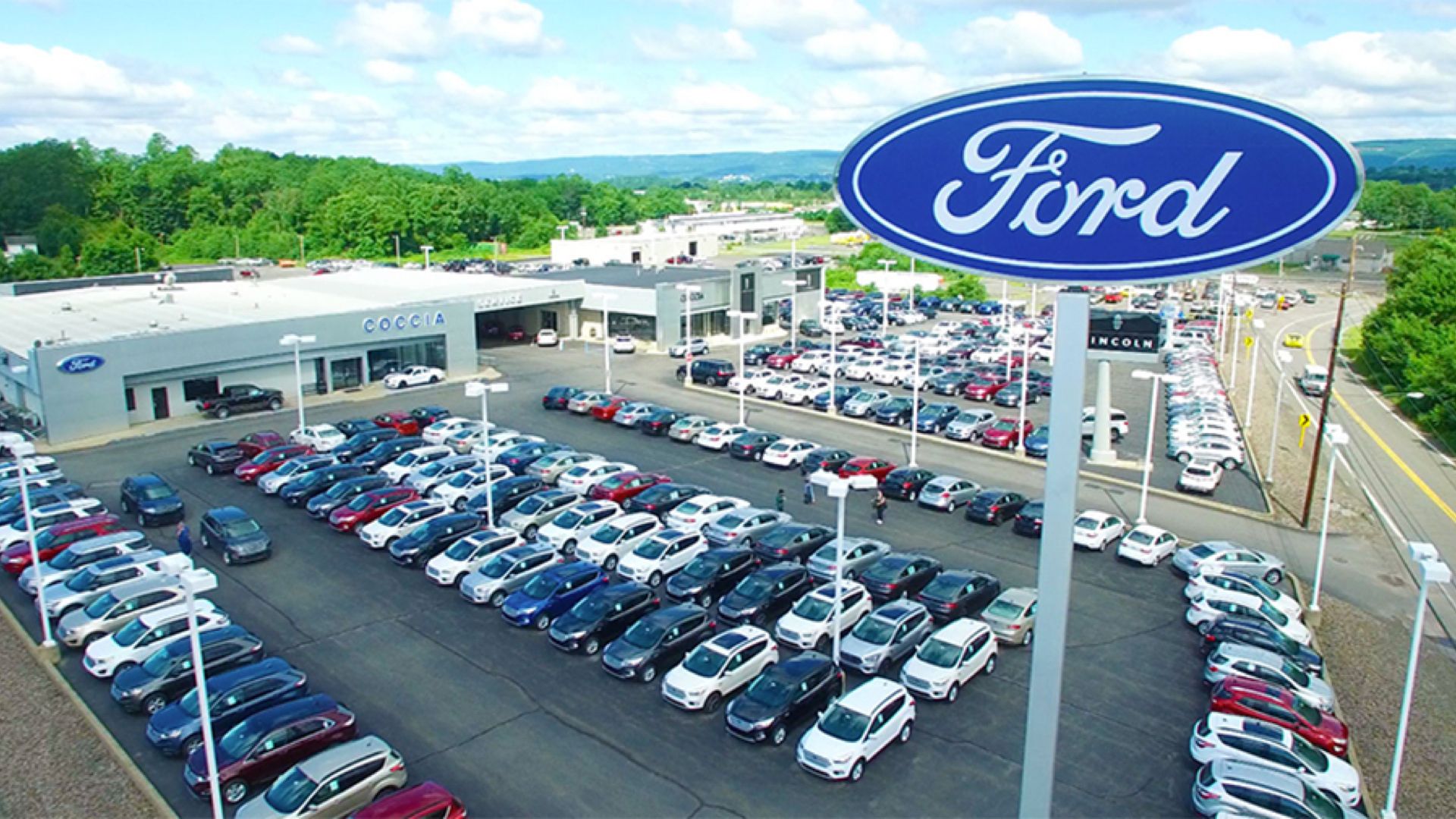Quick Links
Key Takeaways
New car buyers always pay for shipping, even if you pick it up from the dealership.
Purchasing a new vehicle or electric car is always exciting, but then you see the window sticker with a long list of added fees, and your heart stops. Buyers probably have a lot of questions, including wondering, "what is the destination fee?"
With each new electric vehicle announced lately, you've probably seen mentions of a destination fee or destination charge alongside the price tag and talks of federal EV incentives. This isn't a new fee, but we're hearing about it more lately.
It can be confusing for a first-time buyer, but it's important to note that this is a government-mandated fee, and you'll pay it on any new vehicle. This goes for both gas-powered cars and electric vehicles. So, here's what you need to know about new car destination charges.
What is a Destination Fee?
A "destination charge" is a manufacturer's fee for transporting and delivering a vehicle from the factory to the dealership. Dealers then pass that on to consumers. You'll see this listed as a destination charge, a "destination and delivery fee," and some dealers use other terms, including delivery, processing, handling, or freight charge. These all mean the same thing.
Basically, dealerships pay a fee for the entire transit process, from shipping containers, port fees, and delivery, and pass that on to you. You're paying for shipping, in a sense. And yes, the destination fee is taxable, so the charge is added to the price of the vehicle before any sales tax is calculated.
It's odd when you think about it, as we don't pay a destination fee when we buy a new TV from Walmart or Best Buy. Instead, it's included in the price.
How Much is a New Car Destination Fee?
New car destination fees are usually the same throughout the United States, regardless of the dealership location, with Alaska and Hawaii being exceptions. This is due to manufacturers averaging out the total cost of transportation, and that fee must appear on the window sticker as mandated by the government.
So how much is a new car destination charge or fee? It depends on the manufacturer and the vehicle's model. Some brands charge a flat fee, while others have a set price for each model it carries, regardless of trim level.
For example, Chevrolet has a different fee for each new car model it offers. You'll pay around $995 for a Chevy Bolt EV, a flat $1,195 for a smaller vehicle like the Chevy Trax, or upwards of $1,795 for the Chevy Tahoe.
New car destination charges or fees vary by brand. On average, expect to pay around $1,000 to $1,900 to get your vehicle delivered to the dealership. Some exotic cars or special orders can cost upwards of $3,000, but that's rare.
Is the Destination Charge Included in the MSRP?
Another question many people have is whether this fee gets included in the MSRP price or the window sticker. When you buy a new car, you'll find a massive sheet of paper on the window detailing its specs, trim, included options, and maybe a few dealer upgrades. These all contribute to the "manufacturer's suggested retail price," also known as the MSRP.
U.S. law requires a window sticker, known as a Monroney label, on new vehicle sales. And yes, this sticker includes the destination charge fee.
However, dealers will often paint (or add a sticker) with a lower price on the windshield, showing deals and other incentives, so don't be alarmed if you see different prices listed between the car and the window sticker.
Additionally, some dealerships will use a Monroney label with a big, bold "Standard Vehicle Price" number that your eyes will gravitate to. If you keep looking, you'll find the vehicle's real price, including any extra options, dealer markup, and, yes, the destination fee.
Can I Avoid Paying a Destination Fee?
Unfortunately, there is no way to avoid paying a destination fee when buying a new electric or gasoline-powered car. There are a lot of negotiations to be had when you purchase a vehicle, but this isn't one of them. While the fee itself is not manded by the government, the government does mandate that the cost of transportation appear on the window sticker. Due to that, you'll likely never get out of paying it.
Try to negotiate for a better protection plan, tinted windows at no charge, or maybe see if the dealer will pay your registration. Asking nice can go a long way, but don't expect them to waive the destination charges.
However, you want to keep an eye out for a secondary "delivery fee" on top of the destination charge. Some dealers label it as a destination and delivery fee, and that's fine. Unfortunately, other "stealerships" try adding an additional delivery fee on top. Don't pay that fee if there are two. Agree to the destination charge, and inquire into the extra delivery fee if you see one.
Like everything these days, destination charges are getting more expensive. And now that you can't go pick up a new vehicle from the factory like in the good old days, this fee isn't going away anytime soon.





